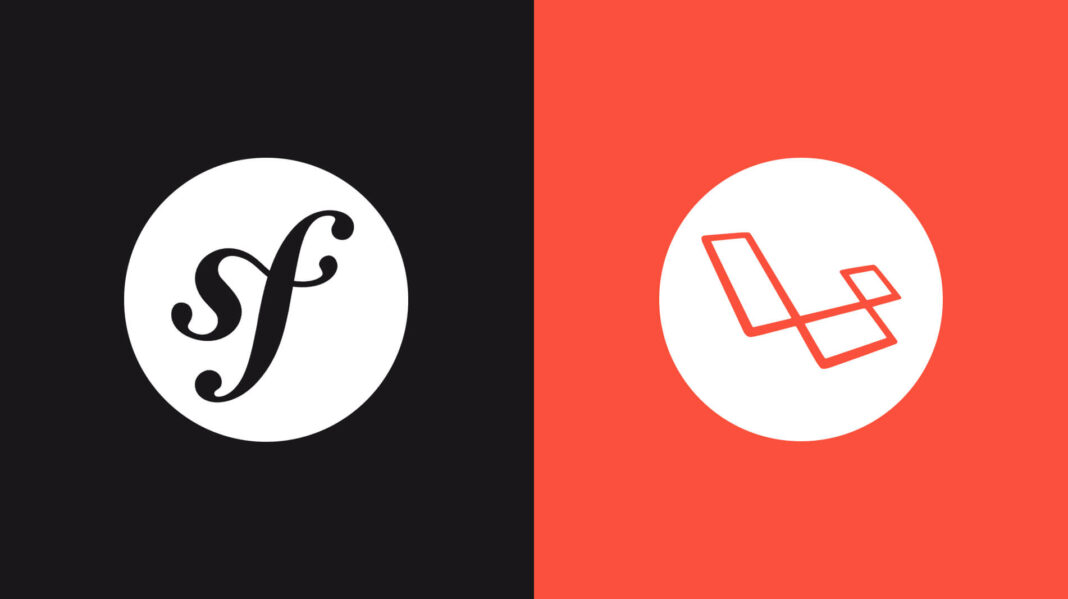Concerning web development services, It is common to select PHP frameworks. Several PHP frameworks are available on the market, but Laravel & Symfony are the two most well-known in the developer community. When picking which framework to use, you should consider the shortcomings and commonalities that both Laravel and Symfony have.
A straightforward and reliable PHP application can be developed more easily when you hire Laravel developers. Developers prefer to use a particular framework whenever they take on a project. Because handling things with little coding effort simplifies things. These PHP frameworks are useful because they offer coding standards that support excellent programming techniques and procedures.
For example, Ruby on Rails for Ruby or Django for Python is the default framework for several major web development languages. On the other hand, PHP offers a variety of well-liked defaults and popular choices.
Symfony has 27K ratings and 8.7K forks on GitHub, while Laravel has 69.9K stars and 22.7K forks. The biggest distinction between Symfony and Laravel at first appearance is that the former is an application framework, and the latter is a collection of reusable components.
Here are their distinctions for your consideration. Try looking at the overviews of both, though, before delving straight into the differences.
Laravel vs. Symfony: Overview
In 2011, Laravel was created as an easy-to-use, tool-rich substitute for CodeIgniter. Since then, it has developed into a powerful, independent PHP framework supported by a sizable user base. Building efficient web projects in PHP is a breeze using Laravel, renowned for its quick and easy coding style. Laravel is a PHP framework that is available as open-source and uses the standard MVC (Model-View-Controller) architecture. The syntax of its framework is remarkable, and it just needs an outline. Laravel recycles the listing components it can utilize to import from several frameworks to develop web projects.
While Symfony is a PHP framework that works with several systems and utilizes the MVC design pattern, it is crucial to remember that it is more than simply a framework; it also includes many PHP components that can be reused. In addition, Laravel uses many Symfony components in its third-party libraries. Therefore Symfony makes up around 30% of Laravel’s code. A more complicated framework than Laravel, Symfony is more difficult to master yet is ideally adapted for large-scale projects.
Laravel vs. Symfony: Benefits and Limitations
After learning about Laravel and Symfony’s general features, let’s look at each technology’s advantages and disadvantages.
Laravel
Following are the advantages & disadvantages of Laravel
Advantages
- Remains current with the most recent PHP features
- Enables the use of APIs to integrate apps
- Platforms and third-party libraries
- Consists of a vast ecosystem of extra tools.
Disadvantages
- To load more quickly on mobile, some programs may be heavier.
- The variation in component quality
- Steep learning curve
- The transition to laravel from the traditional system is difficult.
Symfony
Following are the pros n cons of Symfony
Pros
- The Symfony community is one of the largest on the market, and many developers use it regularly.
- Symfony is used by well-known platforms, including ez publish, Magento, and drupal.
- To keep up with the demands of web developers, Symfony is routinely updated.
- The high caliber of the code
Cons
- Builds and launches slowly
- There aren’t any origin elements because it depends on other technologies, which could cause some applications to load more slowly.
- Testing takes longer because the code needs to be rebuilt for different uses.
- Compared to other PHP frameworks, Symfony could be tough to comprehend at first.
Laravel vs. Symfony: Performance
Given that it might include a wide range of factors, performance measurement is a subject that is always confusing. Most benchmarks show that Laravel is faster than other frameworks in terms of application speed.
Symfony is renowned for its extensive optimization possibilities, and there are numerous levers to be pulled. However, novices might be unable to apply all of the scalability and optimization options that Symfony provides. As opposed to this, working with Laravel is straightforward and remarkably quick. Due to its auto-configuration capabilities, developers are not required to maintain things manually.
Laravel vs. Symfony: Database Access
Object-relational mapping (ORM) is a data access technique offered by both Laravel and Symfony. While Laravel uses Eloquent for ORM, Symfony uses Doctrine for that purpose. Either PHP framework benefits greatly from ORM because it makes data manipulation much easier.
Developers need to create repository functions for recovering the necessary data from the Doctrine database system as it is migrated automatically. Web developers use the Eloquent system for migrating data manually. To access data, they must employ the CRUD (Create, Read, Update, Delete) activities with databases performed by the Eloquent syntax.
Laravel vs. Symfony: Security
Although Symfony’s security mechanism is strong, configuring it can be challenging. It offers a very fine-grained authorization architecture and a variety of authentication options. Although security in Laravel is handled more simply, the fundamental features are usually more than enough.
Symfony vs. Laravel: Dependency Injection
Applications have a large number of services and components, each having its interdependencies. The details of the objects you’ve constructed and their relationships must therefore be carefully monitored. A PHP component called the Service Container creates specific services and stores details about the objects and dependencies it produces. It’s a great element that helps your application adhere to the SOLID design principles.
With Laravel, there is no need to set up any dependency configurations. Laravel automatically examines dependencies. Laravel has excellent auto-detection. A similar capability is offered by a Symfony feature called “autowire.”. Compared to Symfony, which needs some configuration, Laravel is easier to use.
Laravel vs. Symfony: Learning Curve
Developers may learn more about this framework through various resources, such as tutorials, videos, and documentation. Laravel has a really simple learning curve.
It is harder to learn Symfony than Laravel. There is documentation, but not as many tutorials or community help as with Laravel.
Laravel vs. Symfony: Scaffolding
Using your database, a tool called scaffolding automatically creates CRUD for you. Make your application using the designs as a base. The Laravel PHP framework, however, does not provide a scaffolding tool. But you can mix Laravel with several tools.
On the other hand, SensioGeneratorBundle is bundled with Symfony and offers guidance for scaffolding bundles and CRUD-based backends. Additionally, you may scaffold Yeoman-based Symfony PHP applications like Browsersync, Browserify, various CSS Preprocessors, and service workers with the generator-Symfony package -sf.
Laravel vs. Symfony: Coding Style
The Dependency Injection technique is frequently used in Symfony’s coding to produce loosely connected classes that are simpler to test and maintain over time. Although Laravel can be used similarly, by default, it suggests using Facades and helper methods, which are quicker to develop but may prove difficult down the road.
Conclusion
It is advised to hire dedicated developers to fully utilize the framework’s capabilities to build a dependable, strong, and feature-rich application. Nevertheless, there isn’t a perfect solution when comparing Laravel and Symfony. In the end, all that matters are your project’s specifications. Laravel, on the one hand, is your best choice if you’re creating a new product or working on smaller projects. The project can be scaled with more Laravel engineers because certain programmers are experts in PHP Laravel. In contrast, Symfony is a better choice for a long-term complex project.















